Review:
strenghts of the
virtual memory (paging) technique
- The virtual memory (paging) technique
allows a program to be
executed (run) by
- Placing
only
the necessary
portions of the
program in
memory
- Portions of the
program can be
placed
anywhere in
memory
|

|
Paging: a
Virtual Memory technique
- The
running program is
divided into
units called
pages.
Example: (I will use
1 K bytes
page size in
examples):

- Nowadays,
computers use
8 K - 64 K
page sizes
|
|
Paging: a
Virtual Memory technique
- The
main memory is
divided into
units called
frames.
Note:
the frame size is
always
equal to the
page size
(I use
1 K bytes
in examples)

- You can place
any page of a
running program
(stored on the
disk)
inside
any frame in the
memory
|
|
Paging: a
Virtual Memory technique
- The memory
must
contain all the pages
that are
necessary
to
execute
the
current instruction:
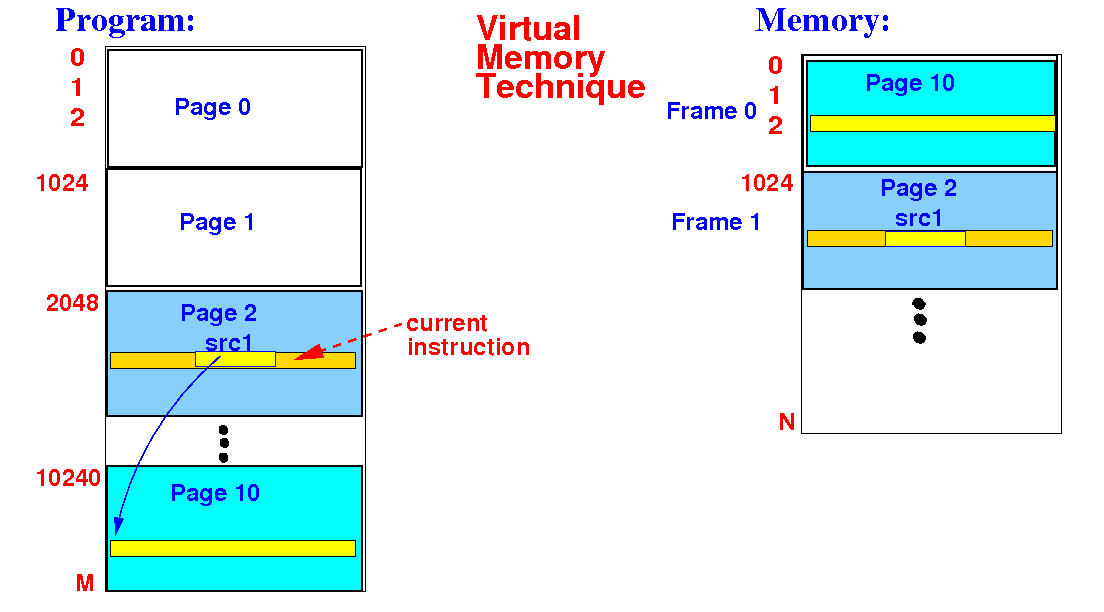
- The
page that contains
the
current instruction
- The
page(s) that contains
the
memory operands
used by the
current instruction
|
|
Overview of the
Virtual Memory technique
-
Program (= virtual) addresses are
mapped (= translated)
to
memory addresses using a
dynamic mapping function:
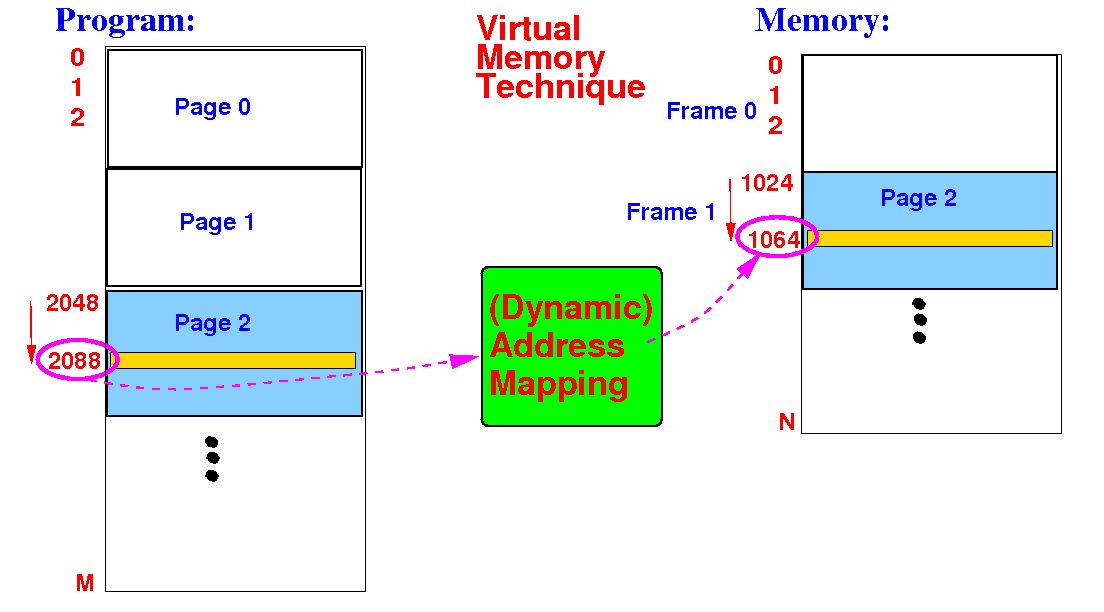
- The Address Mapping is
dynamic because
pages can be
placed in
different
frames at
different times...
|
- The
Virtual Memory Technique
(that uses pages) is
known as
paging
|
Terminology used in
paging
- The
program addresses are
called
virtual addresses in paging
The
memory addresses
are
called
physical addresses
in paging

- The
mapping
between
virtual addresses and
physical addresses in
paging is
implemented using a
page table
(discussed later)
|
What a paging system looks like...
- A
subset of the
pages of the
program are
stored in frames
in computer memory
Example:
only the
pages #1 and #4 are
stored in frames #3 and #1,
respectively
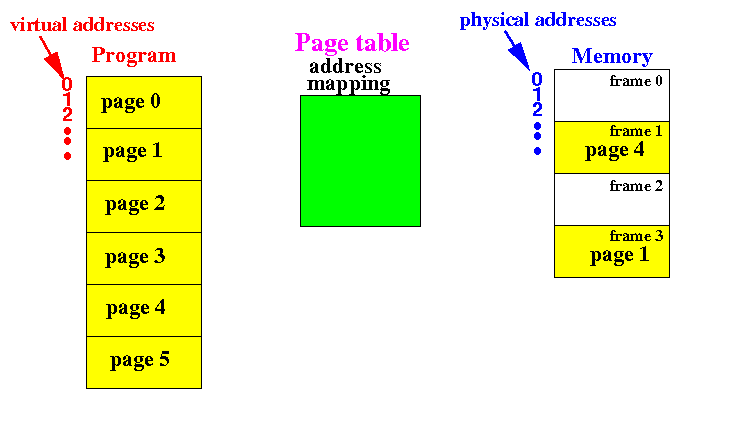
- It is
not required
to store
all the
program pages in
memory
The pages
needed are
pages containing the
current instruction
and
its
operands
|
Page hit
- The page table will
map a
program (= virtual) address
in a page that
is
present
in
memory
to
its
memory (= physical) address:
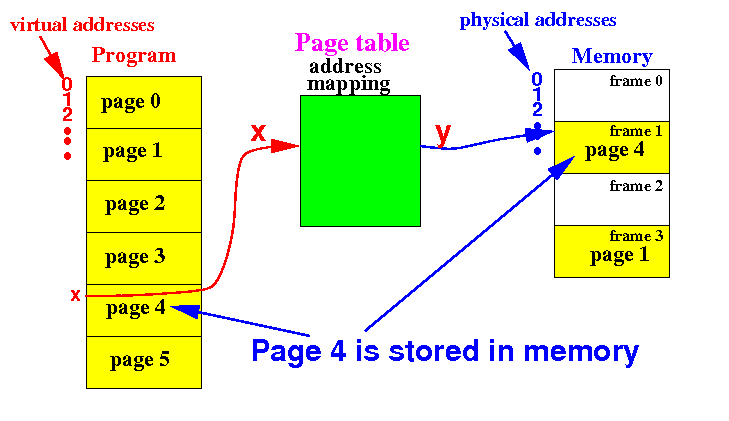
- This situation is
called a
page hit
|
page fault
- The page table will
map a
program (= virtual) address
in a page that
is
absent
in
memory
to
INVALID

- This situation is
called a
page fault
(discussed later)
|
How to get the page number from
a program address
- Assume
program addresses
used by the
computer are
32
bits binary numbers
If
the page size = 1 Kbytes,
the program addresses
are
divided as
follows:
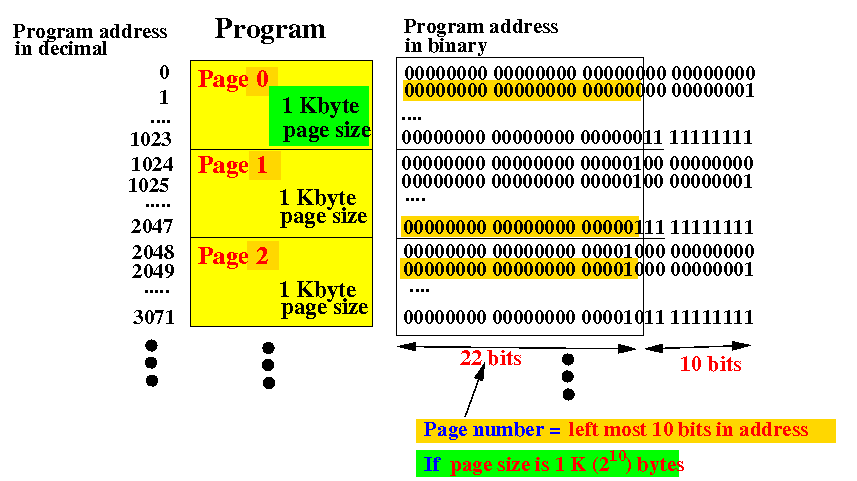
-
For
page size = 1 Kbytes,
the
most significant
22 bits in
program address is the
page number
--- e.g.
all
program addresses in
page
1 starts with
0000000000000000000001
|
How to get the offset in the page from
a program address
- Furthermore:
for
page size = 1 Kbytes (= 210 bytes)
,
the
last
10 bits in the
program address is
the
offset in the
page:

-
Program address 1
000000000000000000000000000001
has
offset 1 (00000001)
in page 0
Program address 1025
000000000000000000010000000001
has
offset 1 (00000001)
in page 1
|
How to get the frame number of
a memory address
- Suppose the
memory has
4 K bytes (= 212)
of
memory
(address bus has
12 wires)
Using
frame size = 1 Kbytes,
this computer
has 4 frames:
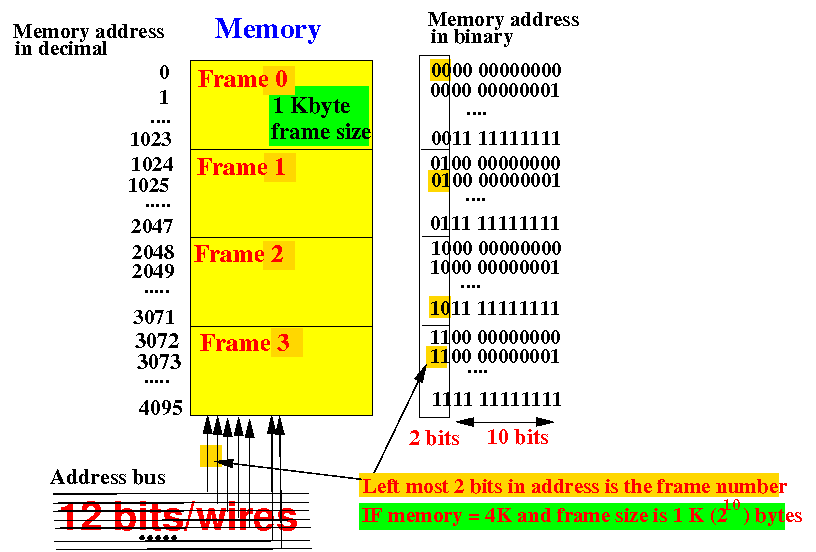
-
With
memory =
4 Kbytes and
frame size = 1 Kbytes,
the
most significant
2 bits in
memory address is the
frame number
--- e.g.
memory addresses in
frame
1 starts with
01
|
How to get the offset in the frame of
a memory address
- Furthermore:
with
frame size = 1 Kbytes (2
10 bytes)
,
the
last
10 bits in the
memory address is
the
offset in the
frame:
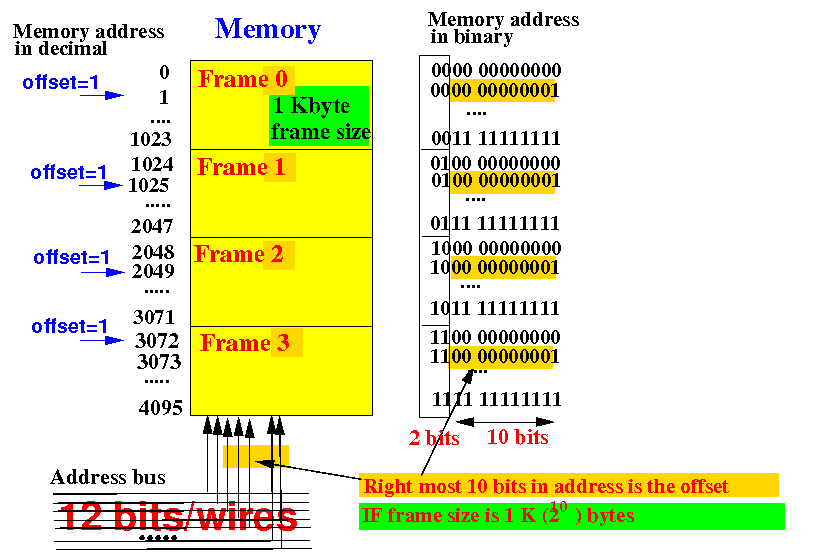
-
Memory address 1
000000000001
has
offset 1 (00000001)
in frame 0
Memory address 1025
010000000001
has
offset 1 (00000001)
in frame 1
(and so on)
|
Important property in the mapping from
a program address to the
memory address
Important property in the mapping from
a program address to the
memory address
-
The
offset in
the program address and
in the corresponding
memory address are
equal
- This property is the
result of
using:
page size = frame size:
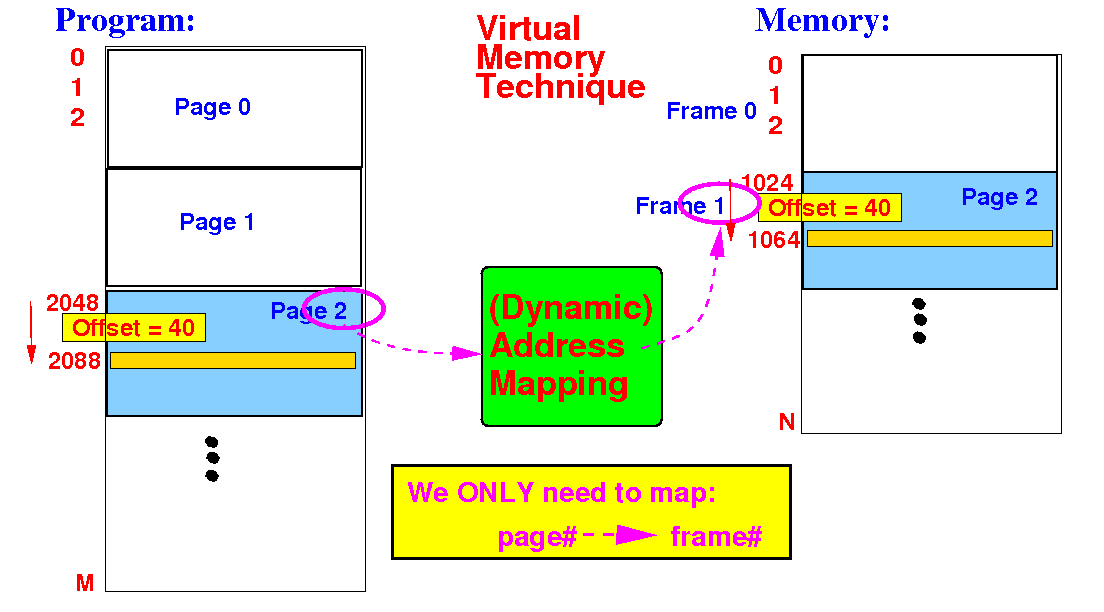
- Therefore:
- We
only need to
map
the page number --->
frame number
|
|
Mapping
virtual (program) addresses to
physical (memory) addresses
- The (dynamic)
mapping function
only need to
map a
page number
to
its
frame number:
virtual (program) address physical (memory) address
aaaaaaaaaaaaaaaaaxxxxxxxxxxxx ----> bbbbbbbbbbbxxxxxxxxxxxxx
<---- page# ----><- offset -> <- frame# -><- offset ->
| ^
| |
+-----------------------------------+
|
- This mapping is
accomplished using
a
page table with
the following structure:
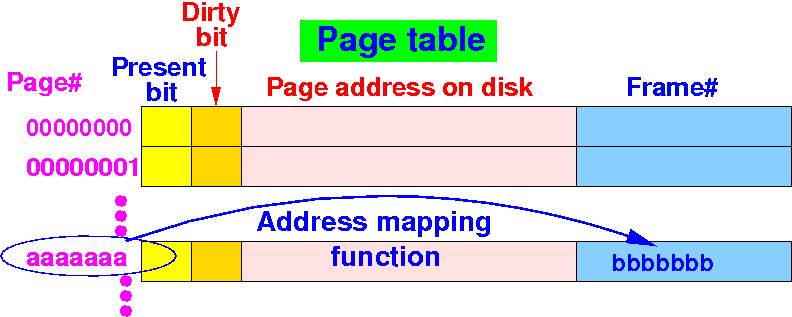
|
Structure of the
Page Table

- Meaning of the
fields in the
Page Table:
- Present bit:
1 means
the page is currently
present
in
memory
and
0 otherwise
- Dirty bit:
1 means
the
content of
the page has been
modified
and
0 otherwise
- Page address on disk =
the
disk address used to
locate the page on
disk
- Frame# = number of
the
memory frame where
the
page was
stored
- The Frame# is
only
valid
when the
Present bit = 1 !
|
|
- The mapping function will
return
Page Fault
if a
page is
not present in the
memory
|
Example of the
content of a
page table
Implementing the mapping of
virtual (program) addresses to
physical (memory) addresses

- The
page# bits are
used to
select a
row in the
page table
- The
memory outputs is the
frame# bits stored
at the selected row
|
(If the
selected
present bit = 0, the
MMU outputs
Page Fault = 1 -
indicating there was a
page fault)
|
DEMO:
/home/cs355001/demo/VirtualMemory/paging.e
"Big picture" view
of the page table content
- Suppose a
running program has
2 pages present
in memory:
- Page 1 is
presently stored in
memory frame 3
- Page 4 is
presently stored in
memory frame 1
|
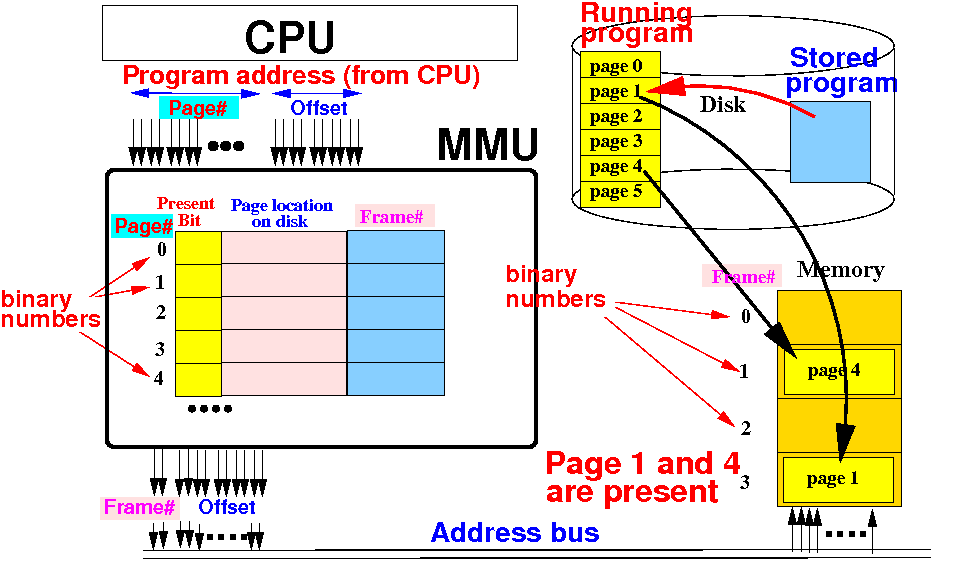
|
"Big picture" view
of the page table content
- The
content of the
page table
that implements
this
mapping is:
- Page 1 is
presently stored in
memory frame 3
- Page 4 is
presently stored in
memory frame 1
|
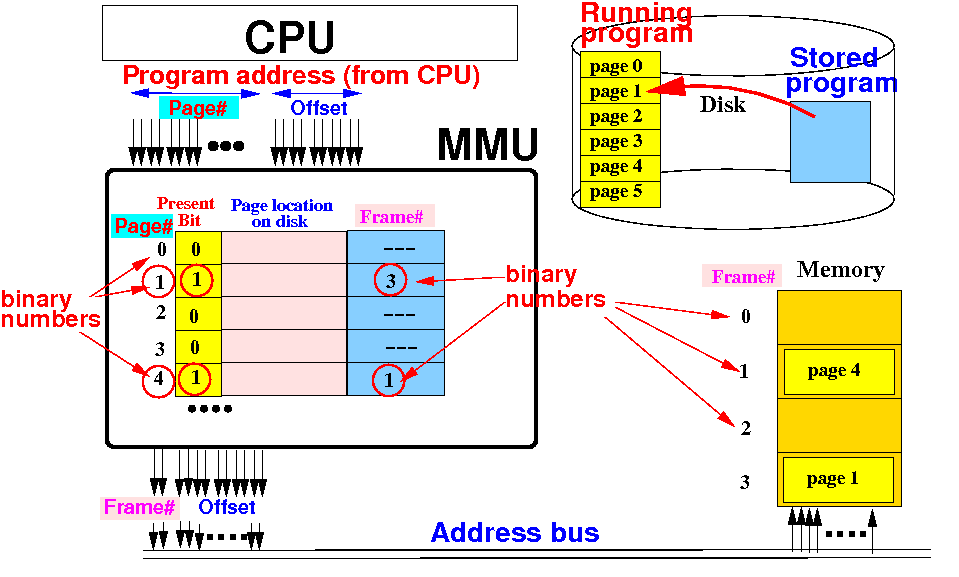
|
Example of the
program address ---> memory address
mapping operation
- Consider the
previous example where
page 1 and 4 of
a running program is
present in
frames 3 and 1,
respectively:
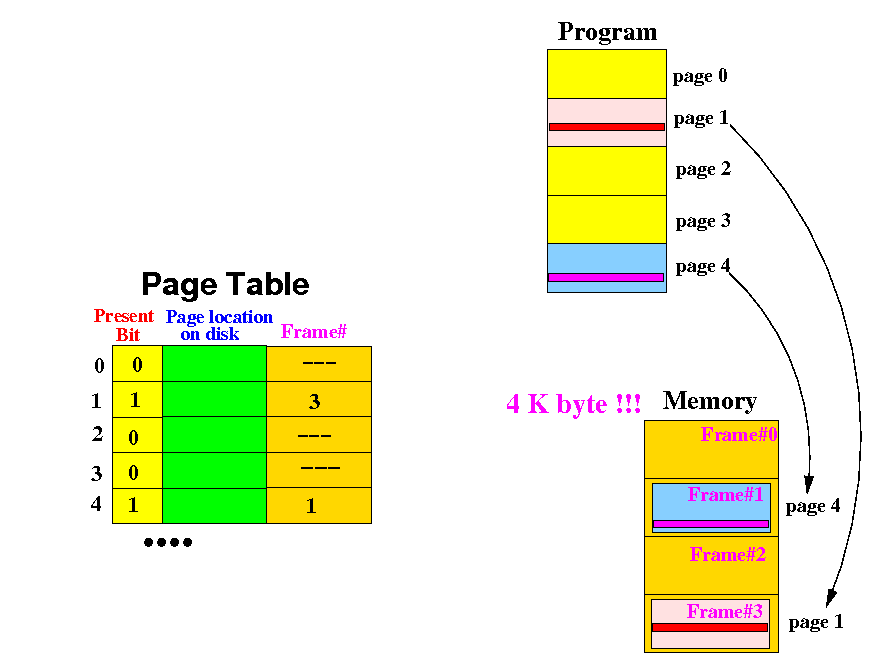
|
Example of the
program address ---> memory address
mapping operation
- Suppose the
CPU want to
fetch the
instruction at
the
program address
00000000 00000000 00000110 01010101
(e.g.: the
PC contains this
program address)
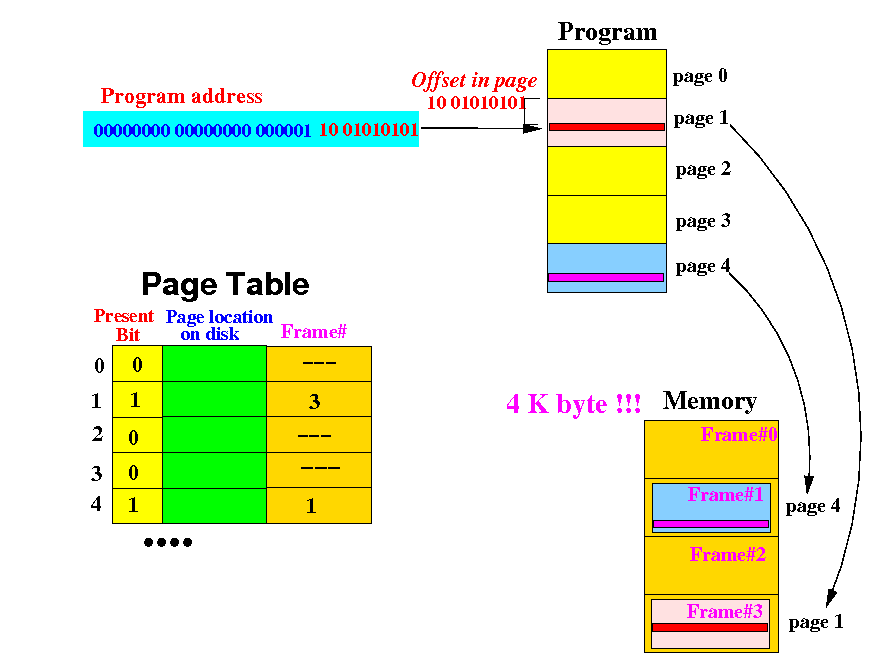
|
Example of the
program address ---> memory address
mapping operation
- The memory location that
contains the
instruction has the
memory address
1110 01010101:
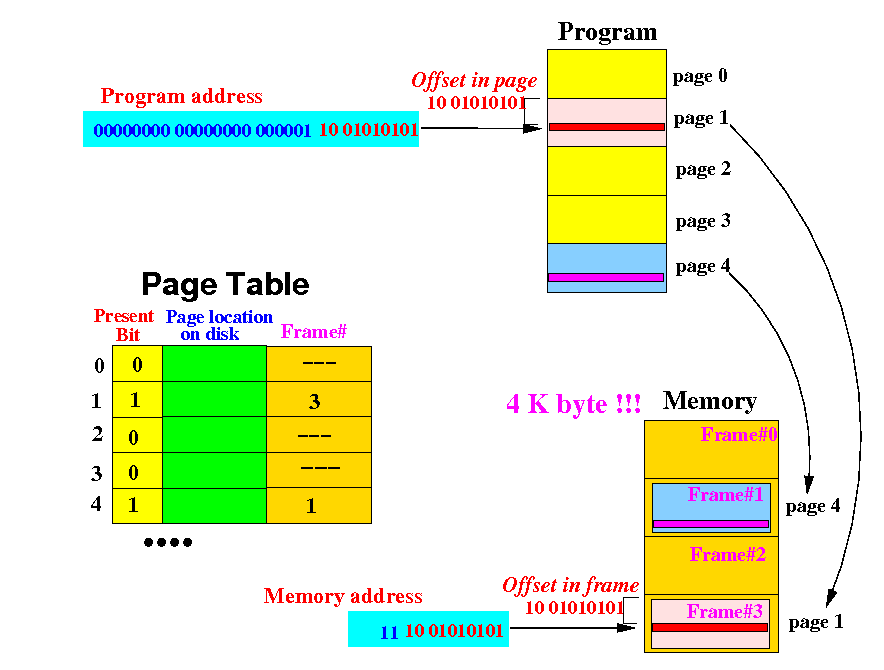
|
Example of the
program address ---> memory address
mapping operation
-
Question:
how can the
CPU
fetch the
instruction from
the memory
using the
program address
00000000 00000000 00000110 01010101:
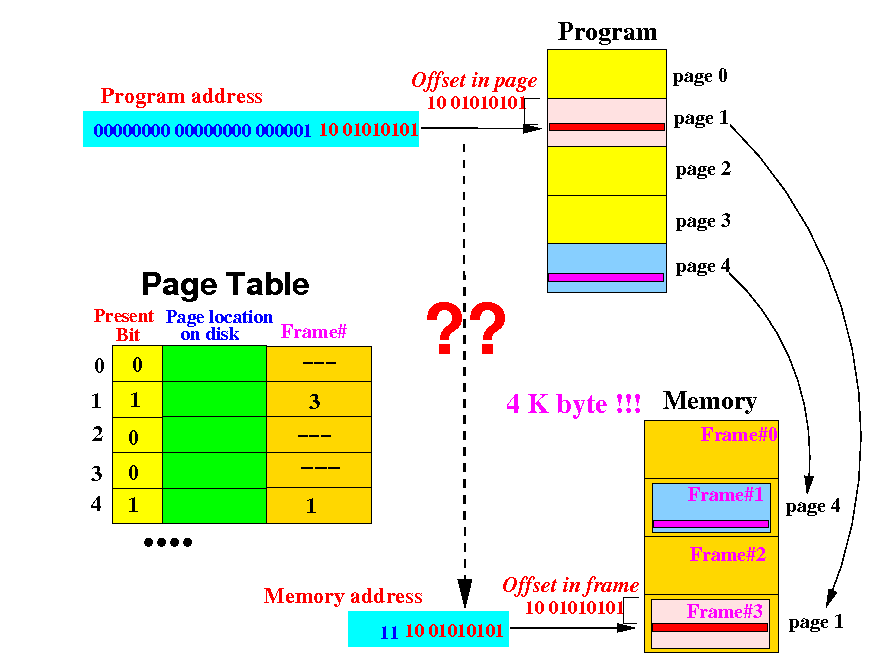
|
Example of the
program address ---> memory address
mapping operation
-
Answer:
the
page #
00000000 00000000 000001
is used by the
MMU to
look up the
frame#
(3 = 112) in the
page table:
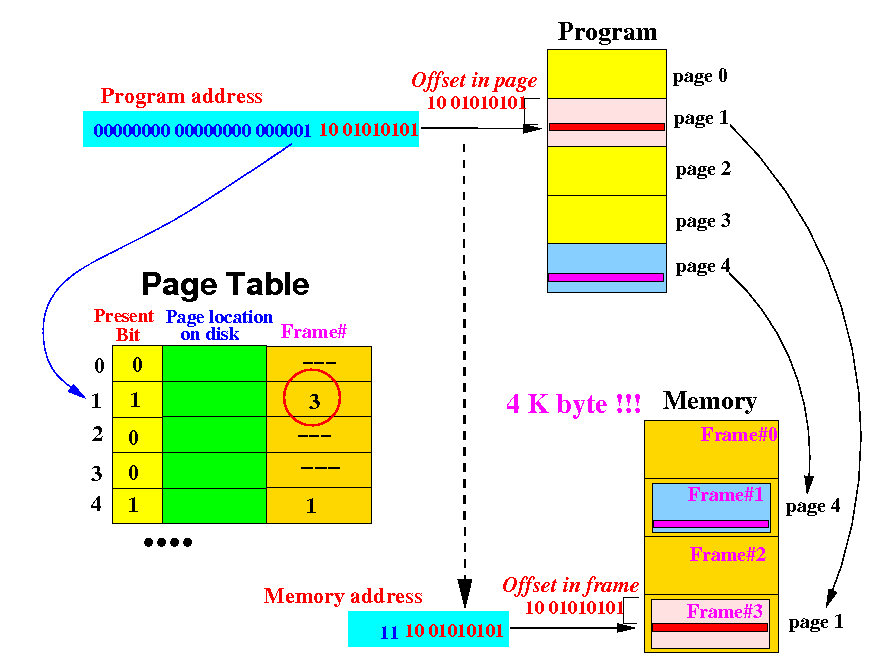
|
Example of the
program address ---> memory address
mapping operation
-
Answer:
the
frame#
(3 = 112)
concatenated with the
offset is
equal to
the
memory address
1110 01010101
where the
instruction
is stored:

|
❮
❯





